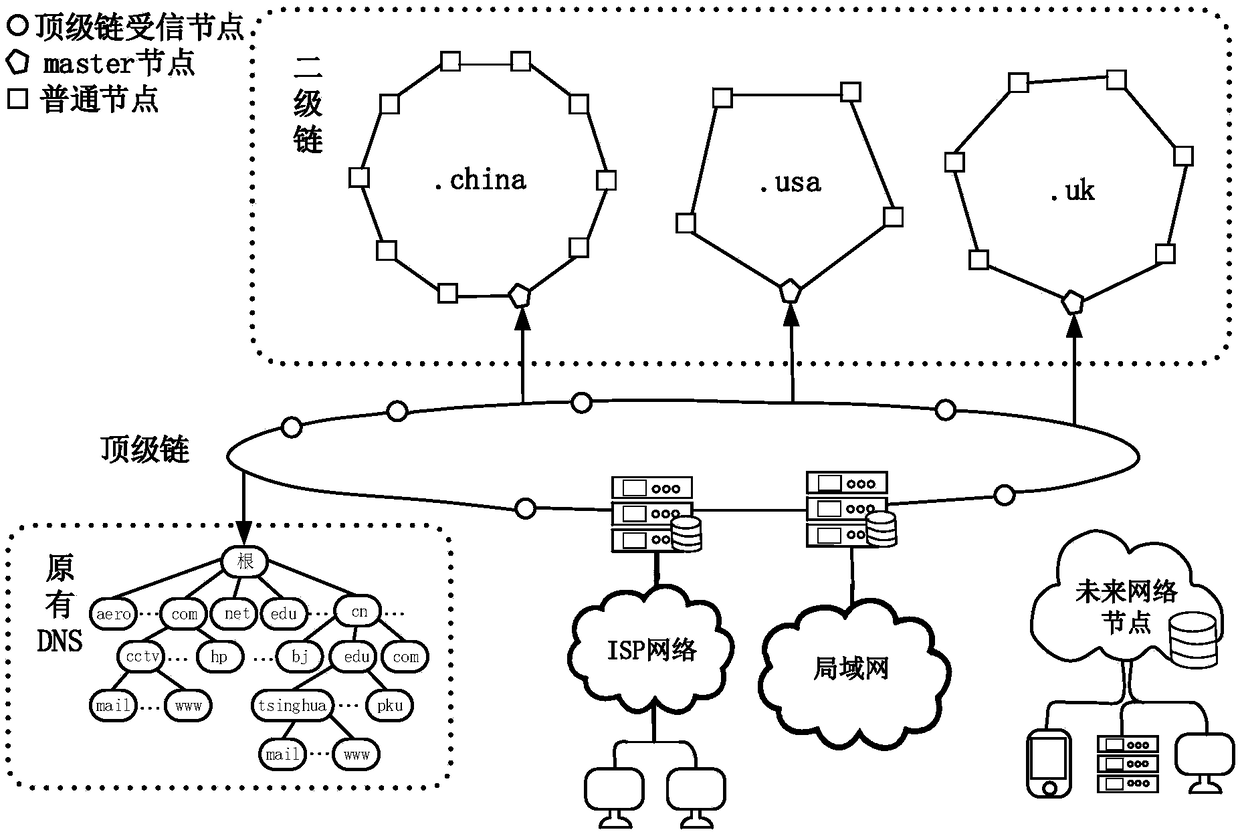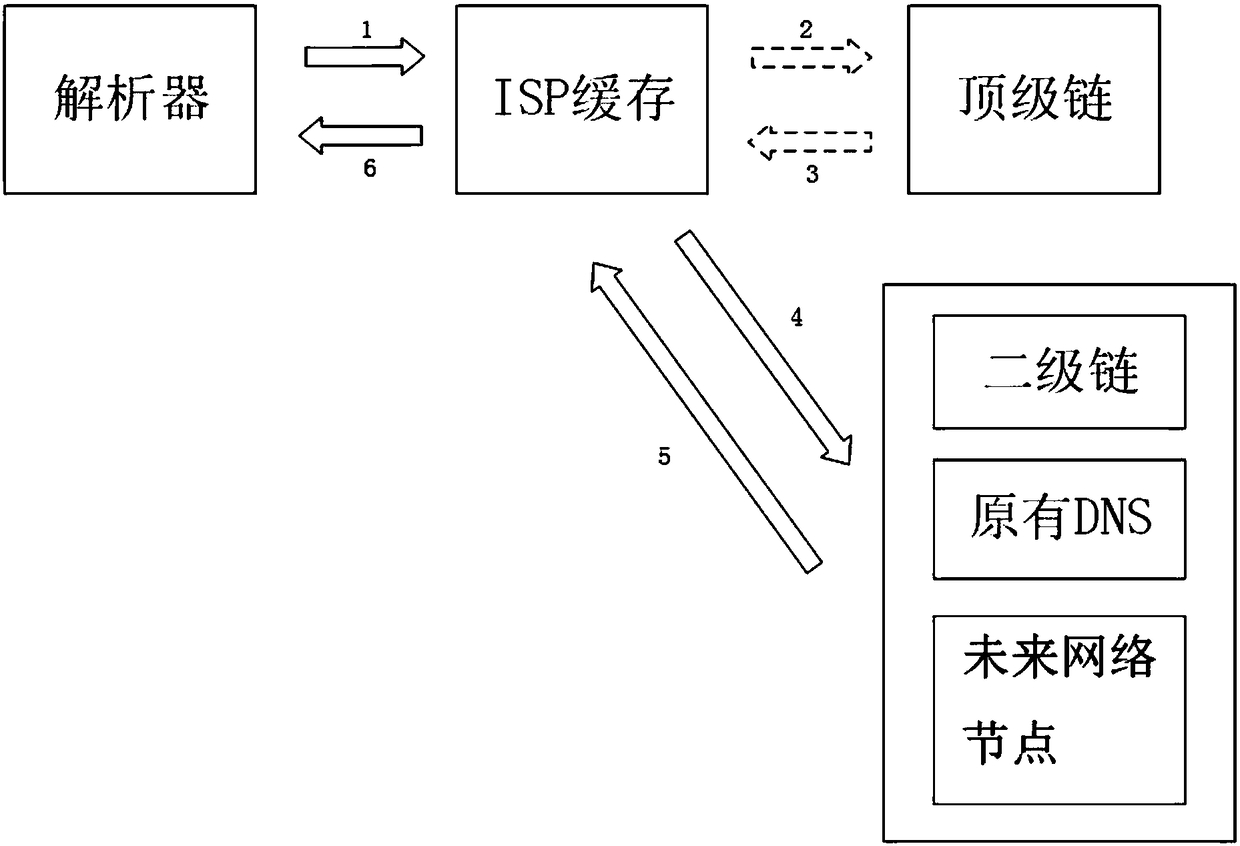Blockchain-based domain name resolution system
A domain name resolution system and blockchain technology, applied in the domain name resolution system based on blockchain, can solve problems such as no cache structure, resolution efficiency to be verified, and unequal Internet sovereign rights and interests, so as to solve the problem of unbalanced distribution and improve The effect of management efficiency and low registration cost
- Summary
- Abstract
- Description
- Claims
- Application Information
AI Technical Summary
Problems solved by technology
Method used
Image
Examples
Embodiment Construction
[0034] figure 1 It shows the blockchain-based domain name resolution system provided by the present invention. The domain name resolution system adopts a hierarchical structure, including a top-level domain name chain network, a second-level domain name chain network, future network nodes and the original DNS system network. The top-level domain name chain network is respectively linked to the second-level domain name chain network, future network nodes and the original DNS system network. The top-level domain name chain network is used for each professional organization to deploy reliable server nodes to form an alliance Each node server records the information of all current top-level domain name chains, master nodes of the second-level domain name chain, future network nodes and the root node of the existing DNS system; the second-level domain name chain network is used for domain name Registration, management, and records of all second-level domain names and their subdomai...
PUM
 Login to View More
Login to View More Abstract
Description
Claims
Application Information
 Login to View More
Login to View More - R&D
- Intellectual Property
- Life Sciences
- Materials
- Tech Scout
- Unparalleled Data Quality
- Higher Quality Content
- 60% Fewer Hallucinations
Browse by: Latest US Patents, China's latest patents, Technical Efficacy Thesaurus, Application Domain, Technology Topic, Popular Technical Reports.
© 2025 PatSnap. All rights reserved.Legal|Privacy policy|Modern Slavery Act Transparency Statement|Sitemap|About US| Contact US: help@patsnap.com


